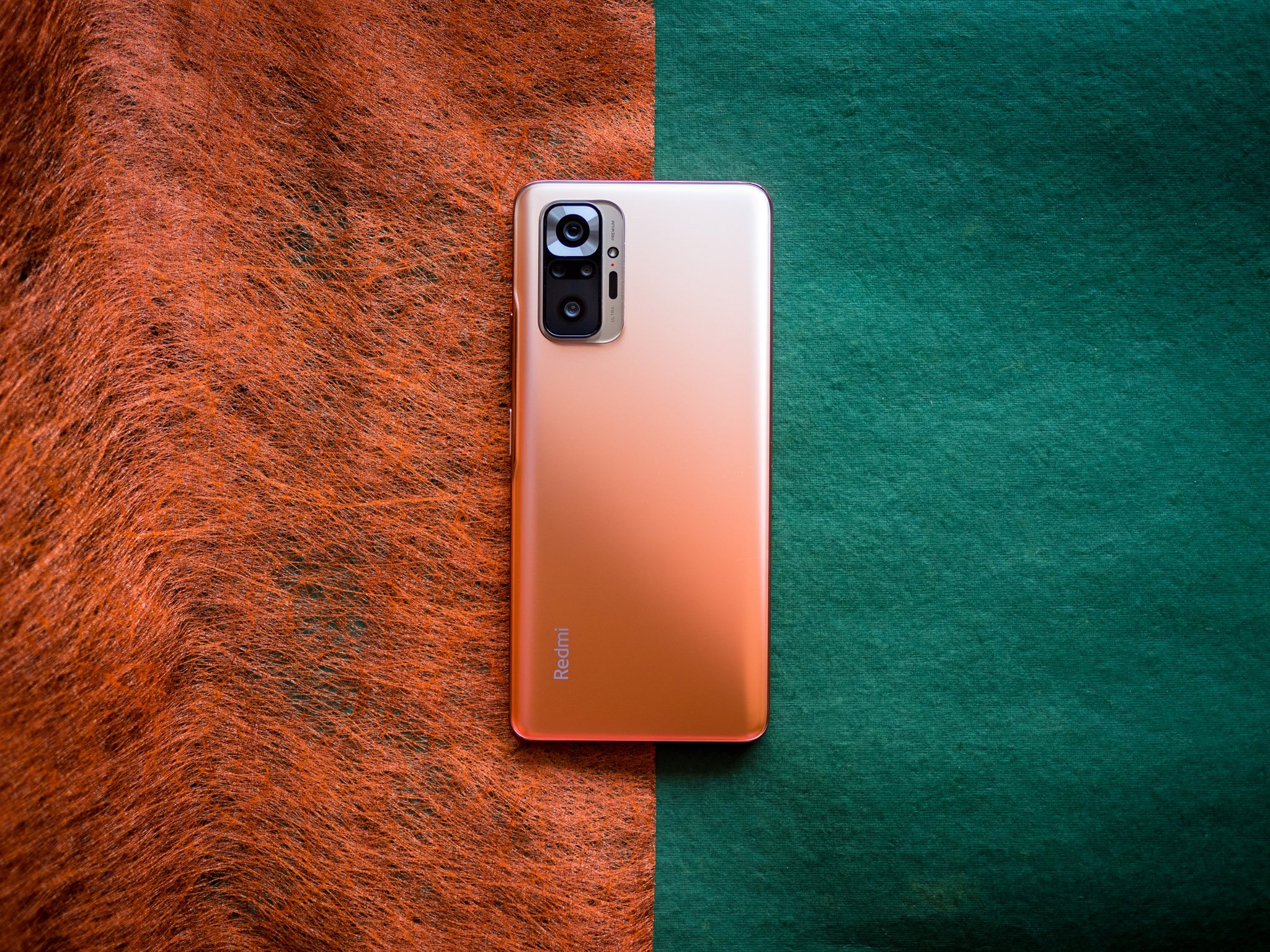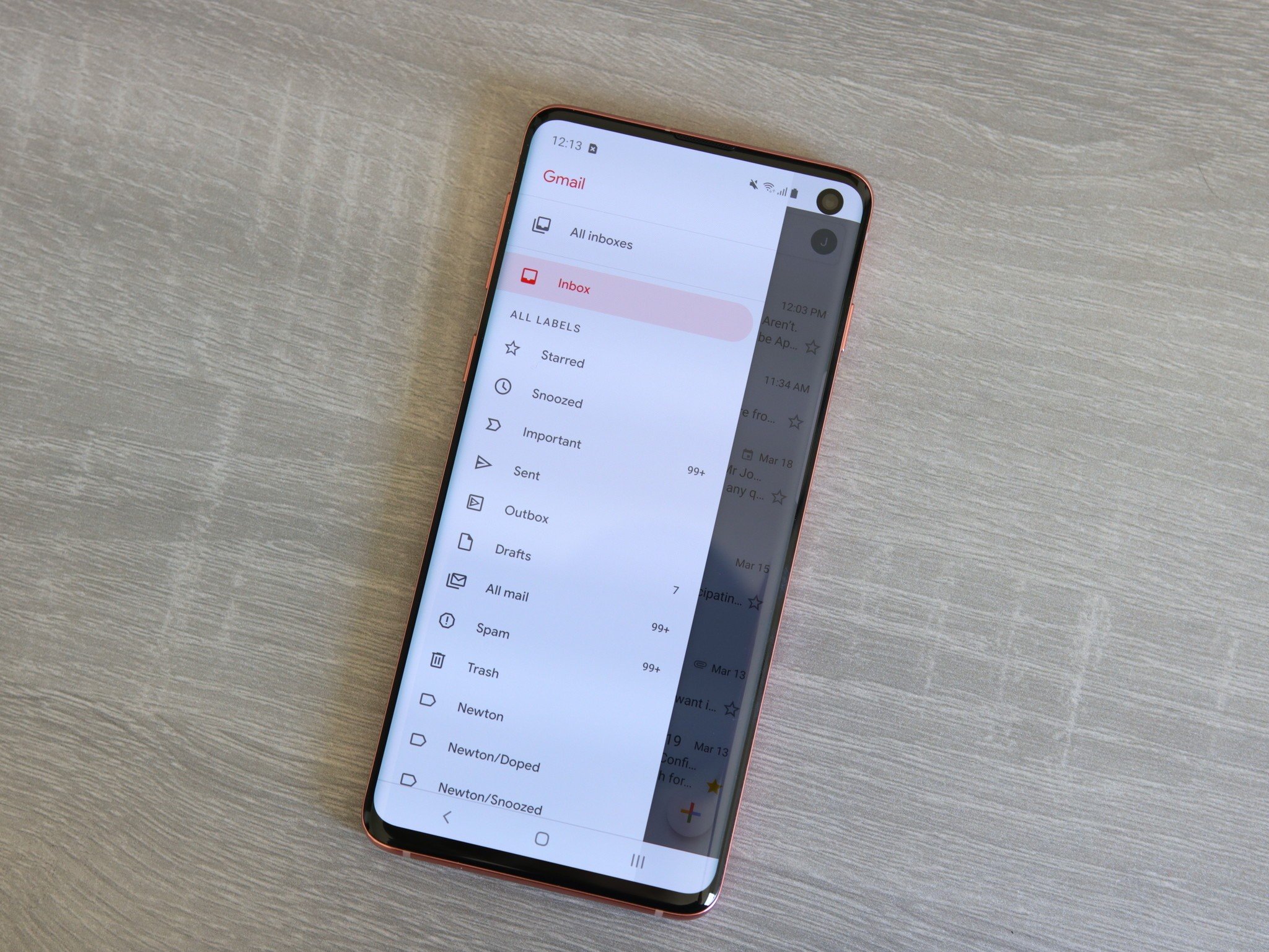Review - Redmi Note 10 Pro Max is the budget phone to beat in 2021 - Android
With a 120Hz AMOLED panel and 108MP camera at the back, the Redmi Note 10 Pro Max has the upgrades you're looking for.

The most important phone launch in India isn't from Samsung, Vivo, Realme, OPPO, or even OnePlus. That particular honor belongs to the Redmi Note lineup. The series has defined the budget category over the last five years, with Xiaomi racking up 200 million sales in that time.
But what's particularly interesting is just how many phones Xiaomi sold in the last 15 months. It took the brand over three years to hit the 100 million milestone, but just 15 months to sell another 100 million units — averaging sales of 7 million a month around the world. It's no wonder, then, that the Redmi Note 9 was one of the best-selling phones globally in 2020 and the standard for the best cheap Android phones.
In 2021, Xiaomi is taking things to the next level with the Redmi Note 10 series. The phones now come with AMOLED screens as standard, and the Redmi Note 10 Pro Max has a 108MP camera — a first in this series. All three phones also feature MIUI 12 based on Android 11 out of the box, sport massive batteries with 33W fast charging, and even offer IP52 water resistance.
More than anything else, the Redmi Note series democratizes high-end features. And right now, no device does that better than the Redmi Note 10 Pro Max. Here's what you need to know about the phone, and why it may just be the ideal choice if you're looking for a phone under ₹20,000 ($275) in 2021.
Redmi Note 10 Pro Max:
- Price and availability
- Design and screen
- Performance and battery
- Cameras
- Software
- The competition
- Should you buy?
Redmi Note 10 Pro Max

Bottom line: The Redmi Note 10 Pro Max combines a sublime 120Hz AMOLED panel with reliable hardware, a great 108MP camera, large 5020mAh battery with 33W fast charging, Android 11 out of the box, and a gorgeous new design. If you're in the market for a new budget phone, you cannot go wrong with the Redmi Note 10 Pro Max.
The Good
- Stunning 120Hz AMOLED panel
- 108MP camera holds its own
- Gorgeous new design
- Outstanding battery life
- Android 11 out of the box
The Bad
- MIUI still needs work
- No NFC
- Lack of 5G could be an issue globally
- 4K recording limited to 30fps
See at Xiaomi India
About this review
I'm writing this review after using the Redmi Note 10 Pro Max for five days in Hyderabad, India. The phone was connected to Jio's 4G network, ran MIUI 12.0.3 out of the box, and did not receive any software updates during the testing window. Xiaomi India provided the unit to Android Central for review.
Redmi Note 10 Pro Max Price and availability

The Redmi Note 10 Pro Max is now available in India, and it will make its way to other countries shortly. The EU and UK are key markets for Xiaomi, and if history is any indication, the Redmi Note 10 series should be available in the region within two months. The same device will be sold as the Redmi Note 10 Pro in global markets.
Xiaomi is selling three variants of the Redmi Note 10 Pro Max in India: the base version with 6GB of RAM and 64GB of storage costs ₹18,999 ($260), the 6GB/128GB model retails at ₹19,999 ($275), and the 8GB/128GB version is available for ₹21,999 ($300).
Redmi Note 10 Pro Max Design and screen

The fact that Xiaomi is bringing a 108MP sensor to the budget segment is noteworthy in and of itself, but what's just as exciting is the design of the Redmi Note 10 Pro Max. Xiaomi is following a similar design aesthetic as its Mi 11 flagship, and that makes the Redmi Note 10 one of the best-looking budget phones you'll find today.
The Redmi Note 10 Pro Max has a gorgeous design, and it's lighter and thinner than its predecessor.
Xiaomi calls this the Evol design language, an evolution of the Aura design that debuted two years ago on the Redmi Note 7 series. The Redmi Note 10 Pro Max has a frosted glass back with a subtle gradient on the Vintage Bronze color variant, and the design makes the phone stand out a lot more than its predecessors. The rear glass pane is protected by a layer of Gorilla Glass 3.
You'll find rounded edges and the same smooth curves at the back where the glass meets the mid-frame, and the device ends up looking rather elegant. Xiaomi didn't go overboard with labels — unlike Realme — with the Redmi branding located at the bottom.
The key design feature at the back is the camera module; the aluminum housing features a camera island that holds the four sensors — with the primary 108MP lens getting a chrome accent for added design flair — and the LED flash as well as the autofocus modules are located on the aluminum pane.









The camera housing is busier than the Mi 11, and the module itself protrudes considerably from the chassis, and that makes using the Redmi Note 10 Pro Max on a flat surface highly irritating. I usually just have phones sitting on my desk and interact with them while they're laying flat on the surface, but I couldn't do that with the Redmi Note 10 Pro Max because of the constant wobble. If you're thinking of picking this phone up, you should invest in a case to counteract the wobble from the camera housing.
Continuing on the design side of things, the Redmi Note 10 Pro Max has a side-mounted fingerprint reader on the right that's built into the power button. The button now sits flush with the frame, unlike previous generations where there was an indent. The sensor itself is unerringly accurate and fast to authenticate, and you can customize it with gestures — a double tap lets you launch the camera, switch to silent mode, turn on the flashlight, take a screenshot, or more.
The volume buttons are located above the power button, and on the left side of the frame is where you'll find the SIM card slot. Xiaomi is offering a full-width slot that lets you add two SIM cards as well as a microSD card should you wish to do so. Up top you'll find a 3.5mm jack as well as the IR blaster, and the secondary speaker. The primary speaker is at the bottom, and sits to the right of the USB-C charging port.

Last year's Redmi Note 9 Pro Max was one of the biggest and heaviest phones in this category, and Xiaomi is making amends this time around; the Redmi Note 10 Pro Max is 0.7mm thinner and 16g lighter than its predecessor while still offering a 5020mAh battery.
The lighter and thinner design make the Redmi Note 10 Pro Max significantly easier to use than its predecessor, and the subtle curves at the back where the glass panel joins the mid-frame also make a difference. The mid-frame itself has a glossy finish and is available in the same color as the back panel, and is made out of plastic.
Xiaomi is offering the phone in interesting color options this time: Vintage Bronze is my favorite model, with the phone featuring an orange gradient that looks fabulous. There's also Glacial Blue, and the standard Dark Night if you don't like flashy designs. All three colors may not be available at launch, so if you like the look of the Vintage Bronze variant, you may want to wait.

Redmi Note devices have a legacy of large displays with vibrant panels, and the Redmi Note 10 Pro Max comes with an AMOLED display — a first for the series. What's more exciting is that Xiaomi has added 120Hz refresh rate as standard, making the Redmi Note 10 Pro Max stand out from its rivals. The panel comes with a pre-installed screen protector, and it is coated with a layer of Gorilla Glass 5.
The 6.67-inch screen has a resolution of 2400 x 1080, and the panel itself is the best you'll find in this segment. It has excellent colors out of the box, and you can customize the color balance to your preferences, with Xiaomi offering three modes: Auto, Saturated, and Standard. You also have the option to manually adjust the color temperature if you want to switch to warmer or cooler colors.
The 120Hz AMOLED panel is the best you'll find in this category — it makes a huge difference.
It also gets very bright — I had zero issues using the screen in harsh sunlight. You also get HDR10 as well as Widevine L1 DRM, and there are no issues with streaming 1080p content from the likes of Netflix or Prime Video. Another standout with the Redmi Note 10 Pro Max is the stereo sound, and the device even has identical speakers at the top and bottom — a true stereo configuration.
The switch to 120Hz AMOLED makes using the Redmi Note 10 Pro Max that much more enjoyable. Everything from scrolling through social media to browsing content on Chrome or playing games is a delight, and while there are select few games that take full advantage of the 120Hz refresh rate, more and more titles are being added to the list.
You get the ability to switch between 60Hz or 120Hz — 60Hz is selected by default out of the box — and while Xiaomi has a nifty adaptive refresh rate tech on devices like the Mi 10T Pro, it hasn't introduced the same feature here. Xiaomi says that it is still fine-tuning the tech for AMOLED panels, so it may show up on future devices.
Finally, you can set up always-on display on the Redmi Note 10 Pro Max, and you'll find plenty of customizability. You get a lot of clock styles to choose from, and you can even set up your own. There's edge lighting as well — it's similar to what you'll find on the Galaxy S21 series, with the edges of the panel lighting up when you receive a notification.
Redmi Note 10 Pro Max Performance and battery

Xiaomi took a leaf out of Samsung's playbook and started reusing parts across its budget portfolio three years ago. The result is that a lot of phones in the Redmi, POCO, and the Mi series have identical hardware.
That's true of the Redmi Note 10 Pro Max as well. The phone offers the same Snapdragon 732G chipset as the POCO X3, and features a 108MP camera from the Mi 10i. The new addition here is the 120Hz AMOLED panel, but the rest of the hardware itself is immediately familiar.
| Specs | Redmi Note 10 Pro Max |
|---|---|
| Software | MIUI 12 based on Android 11 |
| Display | 6.67-inch (2400x1080) 120Hz AMOLED |
| Chipset | 2.30GHz Snapdragon 732G |
| RAM | 6GB/8GB |
| Storage | 64GB/128GB |
| Rear Camera 1 | 108MP ƒ/1.9 (primary) |
| Rear Camera 2 | 8MP ƒ/2.2 (wide-angle) |
| Rear Camera 3 | 5MP ƒ/2.4 (macro) |
| Rear Camera 4 | 2MP ƒ/2.4 (portrait) |
| Front Camera | 16MP ƒ/2.2 |
| Connectivity | Wi-Fi ac, BT5.1 |
| Battery | 5020mAh | 33W |
| Security | Side-mounted fingerprint |
| Colors | Vintage Bronze, Glacial Blue, Dark Night |
| Dimensions | 164.5 x 76.1 x 8.1mm |
| Weight | 192g |
So let's start with the chipset. The 8nm Snapdragon 732G is a known quantity in this segment, and it delivers reliable performance. It has two Cortex A76 cores that go up to 2.3GHz, and six energy-efficient Cortex A55 cores that go up to 1.8GHz.
This isn't the fastest chip you'll find in the budget segment — the Dimensity 800U delivers much more — but it is on par with most devices in this category, and Xiaomi did a good job optimizing it for MIUI. I didn't see any slowdowns in day-to-day use, and most games run fine, with intensive titles switching to medium settings. Xiaomi is leveraging Qualcomm's Elite Gaming features for jitter-free gaming.
Continuing with the hardware, the Redmi Note 10 Pro Max has Wi-Fi ac connectivity, Bluetooth 5.1, and an upgraded vibration motor that delivers much better haptic feedback. It's always great to see budget phones with good haptics, and that is the case here.
The Redmi Note 10 Pro Max is available in three configurations in India — 6GB/64GB, 6GB/128GB, and 8GB/128GB — and all three models feature LPDDR4X RAM and UFS 2.2 storage modules as standard. Xiaomi is also selling a Redmi Note 10 Pro with a 64MP Samsung primary camera, with all other hardware features being the same.
What's particularly interesting is that the Redmi Note 10 series comes with an IP52 rating, giving the phones a decent level of protection against dust and water ingress. Xiaomi hasn't really bothered about water resistance on its phones — the Mi 11 flagship does not have an IP rating — so it is good to see that things are changing in this area.

One of the ways Xiaomi is able to bring down costs of the Redmi Note 10 Pro Max is by limiting the number of LTE bands on the device. The phone has bands 1/3/5/7/8/40/41, and while it works on all 4G carriers in the country, you won't be able to access LTE in most global markets.
Then there's the fact that the Redmi Note 10 Pro Max misses out on 5G connectivity. That's not a big deal at all considering India won't have usable 5G for at least a few years, so you are not missing out on anything here. 5G has been paraded as a buzzword for the better part of 18 months now, and while the standard is taking off in the U.S. and UK, it is pointless to have a 5G phone in India in 2021.
There's no 5G here, but that won't be a problem in India for a few years.
The Indian government will auction 5G frequency in the 3.3 to 3.6GHz range sometime later this year, and we should see 5G trials from Airtel and Jio shortly thereafter — and no, Airtel's feasibility test does not count. The only beneficiary of 5G — at least as it pertains to the Indian market — is Qualcomm, with the vendor leveraging the upcoming standard to increase the licensing fee of its chipsets.
Even if you're interested in the Redmi Note 10 Pro Max as a long-term purchase and want to use the device for two or three years, the lack of 5G should not be a problem. For one thing, once 5G does become available to consumers, it will be significantly costlier than 4G because Airtel and Jio will be looking to regain the considerable investment that they put into acquiring the frequency. And because India is going with Sub-6 connectivity by default, you may not even see any tangible gains over 4G initially.

On the battery side of things, the phone has a massive 5020mAh battery with 33W fast charging. And yes, Xiaomi is bundling a 33W charger in the box. Redmi Note series has stood for battery life, and it is great to see Xiaomi offering the same battery size as last year in a chassis that's lighter, thinner, and significantly easier to use.
The phone delivers well over a day's worth of use from a full charge, even with the 120Hz mode selected. I haven't tested the battery life as thoroughly as I would've liked, but there shouldn't be any issues in this particular area. And when you need to charge the phone, it takes 30 minutes to go from zero to 50%.
Redmi Note 10 Pro Max Cameras

A standout feature on the Redmi Note 10 Pro Max is the 108MP camera at the back. The phone uses the same Samsung HM2 imaging sensor as the Mi 10i, and that makes it a considerable upgrade over its predecessors. There's also an 8MP wide-angle lens with 119-degree field of view, 5MP macro lens that's actually usable (which was a first for me), and a 2MP portrait lens. Up front you'll find a 16MP camera with a fixed focus.
Xiaomi leverages 9-to-1 pixel binning to deliver 12MP shots from the 108MP lens, and you get the option to take full-res photos as well. The camera interface itself should be familiar if you've used MIUI in the past, with all the shooting modes and toggles easily accessible. You get a Pro mode with the ability to tweak settings manually, and there's a dedicated Night Mode 2.0 that now shoots in RAW — it takes a series of images and interlaces them together to deliver detailed shots in low-light conditions.
The downside here is that the Night mode is limited to the primary lens — you won't be able to use it with the 8MP wide-angle module. You also miss out on the ability to record 4K footage at 60fps, with the phone limited to 30fps. There's 1080p at 60fps and 720p at up to 960fps, but Xiaomi is once again limiting 4K at 60fps to its mid-range and flagship devices.









The Redmi Note 10 Pro Max takes outstanding photos in daylight conditions, but that's a given. You get excellent detail, true to life colors, and wide dynamic range without any loss in detail. The camera also does an incredible job in low-light conditions, delivering vibrant shots with low noise levels.
Shadows are turned down for low-light shots, so you miss some of the finer details, but the caliber of photos you're getting here is astonishing. Of course, the dedicated Night mode does a much better job in low-light conditions, eking out more detail and delivering better colors.
The 8MP wide-angle lens takes detailed photos in daylight conditions, but colors tend to skew warmer. And the fact that you can't use the Night mode here limits its use in low-light scenarios. The 5MP macro lens has autofocus, and it does a decent job taking photos of subjects that are within 10cm. These shots tend to be noisy, but you still get a lot of detail.
Overall, the Redmi Note 10 Pro Max has one of the best cameras you'll find in this category. You get standout photos in any lighting scenario, and while it's not suited for 4K video, if you're primarily looking to shoot photos, you will love what this phone has to offer.
Redmi Note 10 Pro Max
11/03/2021 05:29 AM
The OnePlus 9 (Pro) could mark the return of a beloved back cover design
11/03/2021 12:58 PM
Gmail just made it easier to copy and paste email addresses on Android
11/03/2021 01:07 PM
Google Photos Gets A New Video Editor With Advanced Controls
11/03/2021 01:21 PM
A YouTuber crammed 'Tenet' onto Game Boy Advance cartridges out of spite
11/03/2021 03:28 PM
Oppo's new Find X3 Pro leaves everyone in the US with microlens envy
11/03/2021 12:15 PM
Spotify's shared playlist queue feature expands to Polestar 2 vehicles
11/03/2021 06:12 PM
Man United vs AC Milan live stream - How to watch UEFA Europa League
11/03/2021 08:00 AM
- Comics
- HEALTH
- Libraries & Demo
- Sports Games
- Racing
- Cards & Casino
- Media & Video
- Photography
- Transportation
- Arcade & Action
- Brain & Puzzle
- Social
- Communication
- Casual
- Personalization
- Tools
- Medical
- Weather
- Shopping
- Health & Fitness
- Productivity
- Books & Reference
- Finance
- Entertainment
- Business
- Sports
- Music & Audio
- News & Magazines
- Education
- Lifestyle
- Travel & Local
2014 © US apps and news




